Headlines and events archive
Displaying 601 - 650 of 1931
You may also find an archive of news published in the media which are related with the Instituto de Astrofísica de Andalucía - CSIC.
Pages

|
24/10/2019 - 12:30
ANALOGUES OF HIGH REDSHIFT GALAXIES: DISENTANGLING THE COMPLEXITY OF THE GREEN PEAS Young low-mass galaxies with extreme emission-line properties are ubiquitous at high redshift and they are believed to play a key role in cosmic reionisation and the early growth of galaxies at z>4-6. However, a detailed characterisation of their physical properties, critical for a better understanding of these two outstanding problems, is yet not possible. A unique population of lower-z analogues of these primeval systems, dubbed Green Pea (GP... Dr. Ricardo Amorin |
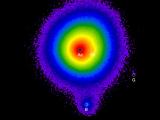
|
02/07/2019
Massive stars prefer high-order multiplicity over binarity MONOS project studies the binary or multiple systems formed by the most massive stars |

|
14/11/2019 - 12:30
SO-IAA Colloquium: Outflows and their feedback effect in galaxies Galactic outflows are an essential component of galaxies' lifecycle. They regulate star formation and can even totally quench star formation in galaxies, hence transforming star forming galaxies into passive systems. I will review the properties of galactic outflows, their multi-phase nature, their driving mechanism, both in normal star forming galaxies and in galaxies hosting Active Galactic Nuclei, both in the local Universe and in... Dr. Roberto Maiolino |

|
12/11/2019 - 12:30
Study of the diversity of AGN dust models The dust component of active galactic nuclei (AGN) produces a broad infrared spectral energy distribution (SED), whose power and shape depends on the fraction of the source absorbed, and the geometry of the absorber respectively. This emitting region is expected to be concentrated within the inner ∼5 pc of the AGN which makes almost impossible to image it with the current instruments. The study the infrared SED by comparison between infrared AGN... Dr. Omaira González-Martín |
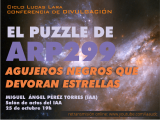
|
25/10/2018 - 19:00
The Arp299 puzzle. Black holes that devour stars In January 2005, a bright flash was detected in the nucleus of the galaxy in the process of fusion Arp 299-B, which was considered a supernova explosion. However, ten years of observations at different wavelengths have allowed us to witness how the luminous region was lengthening and expanding, and to conclude that it is a jet of material expelled by the galaxy's central super-massive black hole after tearing a star. Miguel Ángel Pérez-Torres |
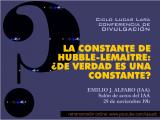
|
29/11/2018 - 19:00
The Hubble-Lemaître constant: is it really a constant? Following an open debate, the International Astronomical Union recently recommended that the rate of expansion of the universe, traditionally referred to as the "Hubble Constant", should henceforth be referred to as the "Hubble-Lemaître Constant". Emilio J. Alfaro |
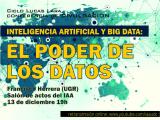
|
13/12/2018 - 19:00
Artificial Intelligence and big data: the power of data Artificial Intelligence and big data: the power of data. Outreach conference Francisco Herrera |
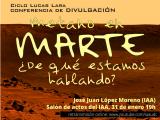
|
31/01/2019 - 19:00
Methane in Mars: what are we talking about? We review the evidence of the existence of methane on Mars and its possible implications. José Juan López Moreno |
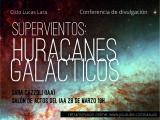
|
28/03/2019 - 19:00
Superwinds: galactic hurricanes Galactic superwinds, common phenomena in galaxies, are capable of releasing an extraordinary amount of energy and transporting material over long distances. Their influence on the host galaxy can be of great importance, to the extent that the formation of these "galactic hurricanes" can even determine the life of galaxies. The study of these phenomena provides us with some keys to solving the enigmas of modern astronomy about the evolution of... Sara Cazzoli |

|
25/04/2019 - 19:00
The first image of a black hole The Horizon Event Telescope (EHT), a planetary-scale telescope made up of eight radio telescopes and forged through international collaboration, was designed to capture the first image of a black hole. In a series of simultaneous international press conferences on April 10, EHT researchers revealed that they had succeeded and showed the first direct visual evidence of a super-massive black hole and its shadow. José Luis Gómez |
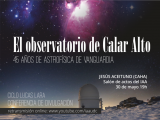
|
30/05/2019 - 19:00
The Calar Alto Astronomical Observatory: 45 years of cutting-edge astronomy It has been 45 years since Calar Alto Observatory was founded. An observatory that, among its merits, has been one of the main engines of the development of astronomy in Spain and, of course, one of the foundations of the creation of the Instituto de Astrofísica de Andalucía (Andalusian Astrophysics Institute). This year the observatory goes from being Hispano-German to being totally Hispanic, with the incorporation of the Junta de Andalucía... Jesús Aceituno |
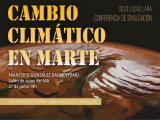
|
27/06/2019 - 19:00
Climate change in Mars Outreach conference about the atmosphere and climate variability of the red planet Francisco González Galindo |
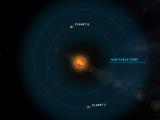
|
18/06/2019
CARMENES finds two temperate terrestrial planets around Teegarden´s star, a small nearby star CARMENES is a visible and infrared spectrograph that operates from the Calar Alto Observatory. Researchers from the Institute of Astrophysics of Andalusia (IAA-CSIC) participate in the research, which collected data from different astronomical facilities, including the Sierra Nevada Observatory (OSN) |
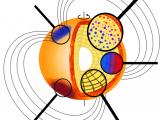
|
05/06/2019
TESS first light on stellar physics sheds light on roAp stars, the extreme pulsators TESS data has allowed to find five roAp, a type of rare stars that shows rapid pulsations, intense magnetic fields and a peculiar chemical composition |

|
19/11/2019 - 12:30
METIS instrument: the IMAGER and the SCAO METIS is one of the three first instruments for the European Extremely Large Telescope (ELT), Europe’s next-generation ground-based telescope for optical and infrared wavelengths which is currently under construction at the ESO site at Cerro Armazones in Chile. METIS is the Mid-infrared ELT Imager and Spectrograph. This instrument will offer imaging, coronagraphy and medium-resolution spectroscopy over the full wavelength range from 3 to 14... Dr. Concepción Cárdenas |

|
07/10/2019 - 12:30
SO Colloquia: FPGAs in space: current experiences, future challenges and opportunities FPGAs are key components in space equipment due to their versatility and performance to implement digital functions. They are embarked in satellites and used in many applications; such as observing the earth, provide telecommunications and navigation services as well as to contribute to science and explore the wider Universe. The FPGAs face very different conditions in space compared to the terrestrial applications, especially due to the... Merodio Codinachs |

|
25/06/2019 - 12:30
Properties of ionized outflows in MaNGA DR2 galaxies Feedback originated from star formation and AGN activity in galaxies can have a significant impact on their evolution. The action of feedback leads to several processes that might have a significant effect on the surrounding gas, for example by heating the system, halting or enhancing star formation, or enriching the interstellar medium. Constraining the incidence and properties of feedback events such as ionized outflows is therefore crucial to... Bruno Rodríguez Del Pino |

|
04/06/2019 - 12:30
Correlations between the size and the stellar population properties of quiescent galaxies During the last decades, many authors have put large efforts to shed light on the mechanisms responsible of the generalized growth in size of galaxies, as well as to disentangle the main “driver” of their stellar content. In our study, we aim at stating new constraints on the mechanisms that may drive the growth in size of massive galaxies through the study of the stellar population properties of quiescent galaxies within the stellar mass-... Dr. Luis Díaz García. |

|
18/06/2019 - 12:30
Oxygen Line Diagnostics in X-ray spectroscopy Line diagnostics is very important to understand the physics of astronomical sources. Taking advantage of oxygen line diagnostics in X-ray spectroscopy, I will show some of our research for both the moderate-resolution the high-resolution X-ray spectra based on the newly updated atomic database (ATOMDB). I will demonstrate its power for SgrA spectrum, HII regions, and some nearby galaxies. In addition, I will introduce related space mission... Dr. Li Ji |

|
24/05/2019 - 11:30
A prototype SKA Science Regional Centre at the IAA In this seminar we will describe our involvement in the design of the SRCs, how we are preparing for hosting an SRC at the IAA - one of the strategic objectives of the IAA Severo Ochoa programme - as well as potential benefits for the IAA and collaboration opportunities, such as the one already started with the PLATO team. We will conclude by illustrating the challenges associated with following Open Science principles with an example of their... Lourdes Verdes-Montenegro, Susana Sánchez, Michael G. Jones |

|
09/07/2019 - 12:30
The Orientation of the Collimated Outflows of Planetary Nebula: Independence Day The discovery of collimated outflows in planetary nebulae (PNe) has changed the paradigm of PN formation. They actively participate in the nebular shaping immediately before or while fast stellar winds and D-type ionization fronts shock and swept the nebular envelope. The general properties of collimated outflows of PNe cannot be studied because projection effects do not allow us to determine their space velocities and linear sizes. The large... Jackeline Suzett Rechy Garcia & Martin A. Guerrero |

|
17/05/2019 - 12:30
TIDES, PLANETARY WAVES, AND ATMOSPHERIC COUPLING A growing number of studies report linkages between unrelated stratospheric and upper atmospheric phenomena. For example, stratospheric warmings correlate with ionospheric perturbations, and with reductions in polar mesospheric cloud occurrence. Understanding these so-called teleconnections is important for prediction of the near-space environment, and interpreting global change proxies. Tides and planetary waves are important agents for... Dr. Ruth Lieberman |

|
19/06/2019 - 11:00
SO Colloquia: Searching extended line-emission objects in wide-field surveys: The IPHAS experience One of the problems we are facing in the study of evolved low- and intermediate-mass stars such as Planetary Nebulae (PNe) is the lack of completeness. Most known PNe belong to the bright or intermediate part of the luminosity function, leaving out those at the faint end. Any global chemical, kinematical, and physical analysis of the PN population is therefore biased. In 2003 the INT Photometric Halpha Survey started scanning the... Dra. Laurence Sabin |

|
13/06/2019 - 12:30
SO Colloquium: Back to Orion Orion is the massive star formation region closest to the Sun and in consequence it has been studied in detail. I will present three recent results from the IRyA group on this region. The first one is the ultraprecise determination of the distance to Orion using VLBI observations of stars with non-thermal emission. The second result is a study of the kinematics of the stars with either termal or non-thermal emission. Finally, we will focus on... Dr. Luis F. Rodríguez |
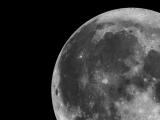
|
30/04/2019
The impact of a rock against the Moon during a total eclipse The study of the impacts on the lunar surface allows to adjust the predictions of impacts on our planet |

|
07/06/2019 - 12:30
The Very Large Array Sky Survey (VLASS) and the next generation Very Large Array (ngVLA) The VLASS is part of a new generation of radio sky surveys. It covers the entire sky above -40 degrees declination. Observations started with the Karl G. Jansky Very Large Array in 2017 and the first epoch covering the entire survey area will be completed by July 2019. This will be followed by two more complete passes with an anticipated completion by 2024. In comparison to previous surveys, the observations are performed at 2-4 GHz and at... Dr. Frank Schinzel |
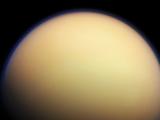
|
15/04/2019
Hurricane winds in Titan's high atmosphere Titan, one of Saturn's largest moons, is the only satellite in the Solar System with a complex atmosphere, resembling the primitive Earth. Very strong and confined winds have been detected in the high atmosphere of the satellite, where it seemed to be not enough energy to trigger such fast winds |

|
03/05/2019 - 12:30
An ionised bubble before the epoch of re-ionisation In a search for Lyman Alpha sources around two spectroscopically confirmed star forming sources in the Subaru Deep Field, we have found some 45 low luminosity star forming galaxies. We find that these sources form a proto-cluster. Moreover, they reside in an ionised bubble of at least 12000 cMpc^3. Dr. Jose Miguel Rodriguez Espinosa |
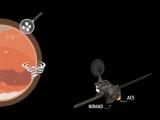
|
10/04/2019
First results from the ExoMars misión: absence of methane on Mars and variations in water vapor due to dust storms After a year in orbit around Mars, the TGO orbiter of the ExoMars mission (ESA-Roscosmos) reveals a surprising absence of methane and a relationship between dust storms and atmospheric water vapor. The results, published in Nature, were obtained with the ACS and NOMAD instruments. Researchers from the Institute of Astrophysics of Andalusia (IAA-CSIC) participate in the results, as well as in the scientific team that developed NOMAD |
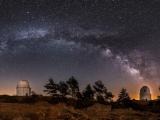
|
10/04/2019
The Governing Council of Junta de Andalucía authorizes its Administration to endorse the Hispano-German Astronomical Center (CAHA) El Consejo de Gobierno de la Junta de Andalucía autoriza a la Consejería de Economía, Conocimiento, Empresas y Universidad, en su sesión de 9 de abril de 2019, la adhesión de la Administración de la Junta de Andalucía a la Agrupación de Interés Económico del Observatorio Astronómico de Calar Alto (CAHA) en Almería. Esta decisión concluye con los requerimientos necesarios para poder efectuar la firma del correspondiente convenio |

|
31/10/2019 - 12:30
SO-IAA Colloquium: Neutral and molecular gas outflows as tracers of the impact of radio jets Our view of the gas and its physical conditions in the central region of AGN has been enriched by the discover of fast and massive outflows of HI and molecular gas. These outflows can be driven by radiation/winds but also by the interaction of the radio plasma with the ISM. Understanding the origin and quantifying their impact requires to trace their location and derive their physical conditions (density of the gas, mass, mass outflow rate and... Dr. Raffaella Morganti |
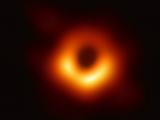
|
10/04/2019
Astronomers Capture First Image of a Black Hole Spanish astronomers from the Institute of Astrophysics of Andalusia (IAA-CSIC), the National Geographic Institute, the Millimeter Radioastronomy Institute and the University of Valencia have participated in this work. This international study assumes a paradigm shift in observations of the supermassive black hole located in the center of the Messier 87 galaxy |

|
04/04/2019 - 12:30
Is there still hope for discovering new physics in the Euclid era? The new generation of cosmological surveys like DESI, J-PAS and Euclid will measure the effect of dark energy on the expansion history of the universe. They will obtain optical and NIR spectra for tens of millions of galaxies and quasars, constructing a 3-D map spanning the nearby universe to 10 billion light-years, and will provide an accurate determination of the distance-redshift relation. I will review the latest distance scale measurements... Dr. Francisco Prada |

|
27/06/2019 - 12:30
Stellar Tidal Streams in Nearby Galaxies as Dark Matter Probes Mergers and tidal interactions between massive galaxies and their dwarf satellites are a fundamental prediction of the Lambda-Cold Dark Matter cosmology. These events are thought to influence galaxy evolution throughout cosmic history and to provide important observational diagnostics of nonlinear structure formation. Thin stellar streams in the Milky Way and Andromeda galaxies are spectacular evidence for satellite disruption at the... Dr. David Martinez-Delgado |

|
21/03/2019 - 12:30
Primer Plan de igualdad del IAA El objetivo de esta charla es presentar a todo el Instituto el I Plan de Igualdad de género. Plantearé las motivaciones y necesidades de contar con un plan de igualdad en un instituto de investigación, cuando ya el CSIC está preparando su III Plan de Igualdad. Revisaré los objetivos y marco de actuación de los planes del CSIC y mi visión de cómo el nuestro se hace para complementar algunas acciones no contempladas dentro de esa estructura... Dra. Josefa Masegosa |
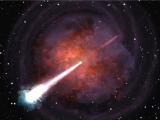
|
21/02/2019
A jet detected from the merging of two neutron stars The merging of the two stars, which occurred in August 2017, expelled a large amount of material that has been observed so far by radiotelescopes on five continents |

|
12/02/2019
First formal meeting between the Minister Pedro Duque and the alliance of Severo Ochoa centres and María de Maeztu units, SOMMa The Institute of Astrophysics of Andalusia (IAA-CSIC) obtainted in 2018 the distinction Center of Excellence Severo Ochoa |

|
18/06/2018 - 12:30
Large-IFS for CAHA & LUCA: Local Universe from Calar Alto LoI for new instruments for 3.5m Telescope F. Prada, E. Perez-Jimenez, R. Gonzalez Delgado, R. Garcia Benito |
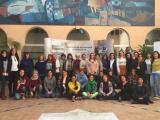
|
07/02/2019
International Day of Women and Girls in Science The Institute of Astrophysics of Andalusia joins the celebration of the International Day of Women and Girls in Science, which seeks to make visible the scientific work of women and promote vocations in girls |

|
19/02/2019 - 12:00
Instrument development at the AAO The AAO is a consortium of three Australian instrumentation groups, based at Macquarie University, University of Sydney, and the Australian National University. Collectively, the consortium has delivered hundreds of instrument projects for astronomy, for our own telescopes and internationally. We have particular expertise in fibre positioners and fibre systems, spectrographs, astro-photonics, and adaptive optics. I will give an... Jon Lawrence |

|
09/05/2019 - 12:30
Nonlinear dynamics of space and astrophysical plasmas Solar atmosphere and solar wind provide a unique laboratory for understanding the nonlinear dynamics of space and astrophysical plasmas. A quantitative analysis of the reconnection condition and the degree of intermittency reveals that rope–rope magnetic reconnection is the most likely site for genesis of interplanetary intermittency turbulence in this event. The dynamic pressure pulse resulting from this reconnection triggers the onset of a... Prof. Abraham Chian |

|
28/03/2019 - 12:30
CTA: the Cherenkov Telescope Observatory for VHE Gamma Ray astronomy The Cherenkov Telescope Array (CTA), currently in construction, shall be the Cherenkov Telescope Observatory for VHE Gamma Ray Astronomy, and shall provide crucial data for the understanding of the extreme universe in the recently open multimessenger era. The goals and characteristics of the project will be reviewed, and the current status and plans presented. In addition, the crucial role of the Spanish community in this project will be... Manel Martinez |

|
16/05/2019 - 12:30
Active Galactic Nuclei and their large-scale structure: an eROSITA mock catalogue I will present in this talk a methodology to construct mock catalogs for X-ray selected AGN samples based on dark matter only N-body simulations. With this method, we predict observed AGN magnitudes in the UV, optical and NIR bands, by adopting a set of empirical spectral energy distributions. Dr. Johan Comparat |

|
25/04/2019 - 12:30
Cosmic Dust in Planetary Atmospheres In this seminar I will describe the results of a large study designed to determine the input rate of cosmic dust to the terrestrial atmosphere, using a self-consistent treatment of cosmic dust from the outer solar system to the Earth’s surface. John Plane |
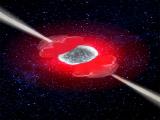
|
13/03/2019 - 12:30
Signatures of a jet cocoon in early spectra of a supernova associated with a gamma-ray burst Thanks to a detailed observational monitoring and an accurate spectral synthesis analysis of the early phases of SN 2017iuk, we conclude that these features originate from the mildly relativistic hot cocoon that is generated by the GRB ultra-relativistic jet, while it is expanding and decelerating into the medium surrounding the progenitor star. Dr. Luca Izzo |
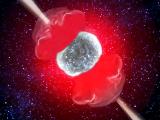
|
16/01/2019
Observations of a rare hypernova complete the picture of the death of the most massive stars A work, lead by the Institute of Astrophysics of Andalusia (IAA-CSIC) and published in Nature, studies in detail the death of a massive star that produced a gamma-ray burst (GRB) and a hypernova |

|
10/01/2019 - 12:30
The road to the Square Kilometre Array New and existing facilities operating at submm-to-m wavelengths are shedding new light on the formation of planets, black holes, and even the first galaxies. These telescopes provide the test bed for the technological advancements required to build the next generation of large radio telescopes, like the Square Kilometre Array (SKA). Dr. Jeff Wagg |

|
07/03/2019 - 12:30
High-velocity Molecular Clouds near the Galactic Center The central region of our Galaxy contains a huge amount of molecular gas. This region is often referred to as the "central molecular zone (CMZ)". The recent ALMA observations toward this HVCC revealed orbital motions around an invisible massive object, which is probably an intermediate-mass black hole. Yuhei Iwata |
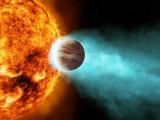
|
06/12/2018
The "planet-hunter" CARMENES studies evaporating atmospheres and water vapor beyond the Solar System Three studies with the infrared channel of the CARMENES instrument, developed at the Institute of Astrophysics of Andalusia (IAA-CSIC), are published in the journals "Science" and "Astronomy & Astrophysics". CARMENES opens a door to the study from the ground of the composition of exoplanetary atmospheres, their escape processes and their clouds and aerosols |
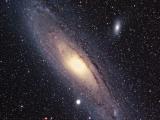
|
27/11/2018
A new instrument for studying galaxies in the local universe from Calar Alto LUCA is proposed as a new generation instrument for the 3.5 meter telescope of the Calar Alto Observatory (Almería, CAHA). The project, conceived in the Institute of Astrophysics of Andalusia (IAA-CSIC), has been selected by the advisory committee of the observatory for the funding of the feasibility study, which is managed by the University of Almeria (UAL) |